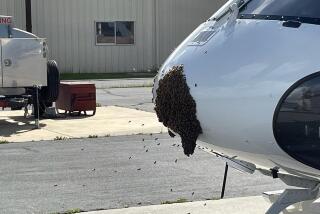Watch this butterfly and bee drink crocodile tears
Floating quietly through a Costa Rican river, a scientist has documented a bee and a butterfly drinking the tears of a caiman crocodile -- and he has the video to prove it.
This scene, which sounds like it could be straight out of an ancient fable, was described in the journal Frontiers in Ecology -- and, as it turns out, may be a common phenomenon in the natural world.
Lead author Carlos de la Rosa, an aquatic ecologist and director of the La Selva Biological Station, watched as a bright orange Julia butterfly and a single, very large bee sipped tears around the corners of a spectacled caiman (Caiman crocodilus) that was placidly basking on the banks of the Puerto Viejo River. This feeding session was no fast-food fly-through -- it lasted a quarter of an hour.
Intrigued by what he had seen, De la Rosa did a Google search for images and discovered he wasn’t the first person to see something like this -- a whole host of tourists, photographers and wilderness buffs had documented the same behavior. Another pair of researchers had previously found an Ecuadorian bee sipping the tears of a turtle. Bees in Thailand have even been caught imbibing the tears from humans.
But why did so many insects exhibit this habit? Turns out that tears are a rich source of valuable proteins and minerals -- including salt, which can be hard to come by if you’re not near the ocean. That’s why butterflies can often be spotted drinking from muddy, mineral-rich puddles, and why animals sometimes consume nutrient-rich sweat or urine.
“Tear-feeding behaviors are apparently a common strategy exploited by several groups of insects to obtain salts and proteins from concentrated sources,” De la Rosa wrote.
No word on why the caiman was patiently putting up with bugs flapping around his eyeballs for a quarter of an hour.
[For The Record, 8:40 a.m. PDT May 1: An earlier version of this post identified the lead author of the study as Carlos de la Selva. His name is Carlos de la Rosa.]
ALSO:
A hunt for dark matter in a former gold mine
If it quacks like a bio-duck, it’s a minke whale
Meet Kepler-186f, the most ‘Earth-like’ planet ever found







